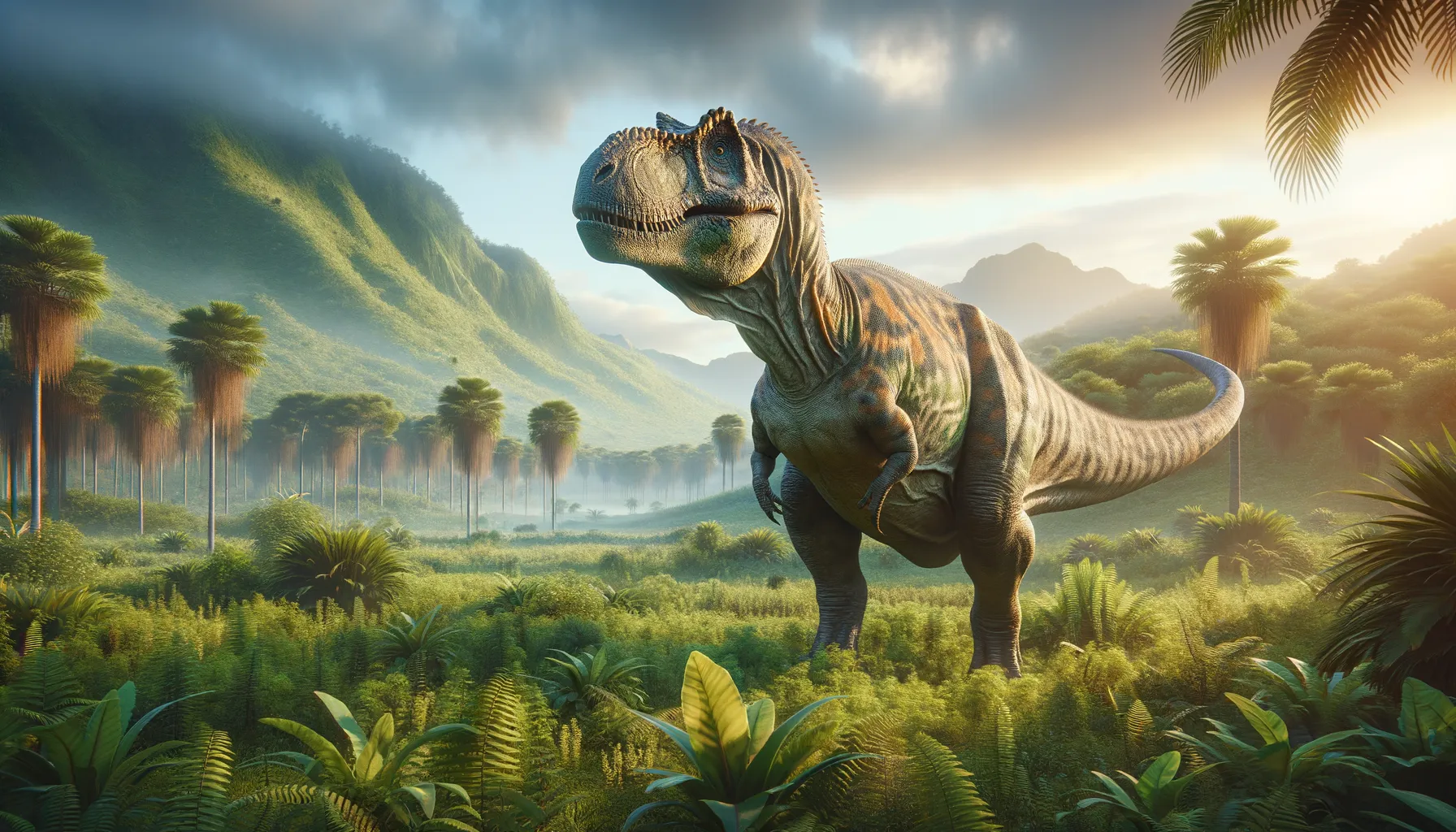
Mongolosaurus
A giant walker of ancient Asia!
Period
Cretaceous
Length
Roughly 6 meters long.
Height
Around 3 meters tall.
Weight
Approximately 1 ton.
Mongolosaurus was a herbivorous dinosaur that lived during the Cretaceous period. It is known for its stocky build and has been primarily discovered in Mongolia. Its adaptations were suitable for a lifestyle wandering through lush plant-dominated landscapes. Despite being herbivorous, its robust frame suggests it could defend itself against predators of its time.
Diet
Mongolosaurus was primarily herbivorous, feeding on a variety of low-lying vegetation. It likely consumed leaves, twigs, and possibly fruits that were accessible in its environment.
Hunting
As a herbivore, Mongolosaurus did not hunt but instead foraged for food. Its diet relied on the availability of plants and it likely moved in search of abundant feeding grounds.
Environmental challenges
Living during the Cretaceous period, Mongolosaurus faced several environmental challenges, including fluctuating climates. The shifting landscapes required adaptability to various food sources. With other herbivores present, competition for resources could have been significant, leading to migratory patterns in search of sustenance.
Speed
Moderate speed on land.
Lifespan
Estimated lifespan of 20 to 30 years.
First discovery
Discovered in the early 20th century in Mongolia.
Fun Facts
- Mongolosaurus lived during the Early Cretaceous period, around 130 million years ago.
- This dinosaur was discovered in the Gobi Desert, one of the richest dinosaur fossil sites in the world.
- Mongolosaurus was an herbivore, meaning it primarily ate plants.
- It is believed to have been a relatively small dinosaur, likely not exceeding 10 meters in length.
- The name 'Mongolosaurus' means 'Mongolian lizard,' highlighting its discovery location.
- Fossil evidence of Mongolosaurus is limited, making it a mysterious dinosaur with much yet to learn about its behavior and appearance.
Growth and Development
Mongolosaurus hatched from eggs and likely grew rapidly during its early years. Juveniles would have been vulnerable to predators, necessitating quick development of strength and size. Over time, individuals would reach full size, contributing to the herd's overall defensive capabilities.
Habitat
Mongolosaurus inhabited regions that provided ample vegetation, such as ancient floodplains and forests. These areas offered both food resources and shelter from predators. The natural habitat required regular movement to access fresh plant life and water sources.
Interaction with other species
As a herbivore, Mongolosaurus coexisted with a variety of dinosaurs, including potential predators. It may have formed herds for protection and social interaction. This gregarious behavior could have led to interactions with other herbivore species, both for competition and mutual defense.
Natural lifespan
Natural lifespan could have been around 25 years.
Reproduction
Mongolosaurus reproduced by laying eggs in nests possibly communal to ensure higher survival rates. These nests would have been strategically located for optimal safety and warmth, giving hatchlings the best start. Parents might have offered some level of protection post-hatching.
Social behaviour
Mongolosaurus is believed to have exhibited social behaviors common among herbivorous dinosaurs, likely forming herds. This social organization helped protect against predators and increased foraging efficiency. Social interactions could have included communication and cooperation in various herd activities.
Fossil locations
Fossils of Mongolosaurus have primarily been found in Mongolia, providing insight into its distribution. These discoveries have allowed paleontologists to better understand the region's paleoecology. Fossil digs in Asia continue to reveal more about this unique dinosaur species.
